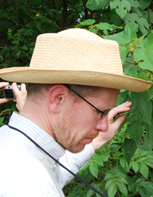Many diseases have geographically variability in prevalence or seasonal variability in epidemics, which may, directly or indirectly, be causally related to climate. Unfortunately, the nature of the relationship with climate is not always clear.
With the recent outbreak of COVID-19, scientists (including a depressingly large number of ecologists who ought to know better) have wasted no time in applying their favourite methods to the available case data and climate data to produced a pack of preprints.
- Ficetola and Rubolini (2020) Climate affects global patterns of COVID-19 early outbreak dynamics. medRxiv 2020.03.23.20040501; doi: https://doi.org/10.1101/2020.03.23.20040501
- Araujo and Naimi (2020) Spread of SARS-CoV-2 Coronavirus likely to be constrained by climate. medRxiv 2020.03.12.20034728; doi: https://doi.org/10.1101/2020.03.12.20034728 (rebuttal preprint)
- Wang et al (2020) High temperature and high humidity reduce the transmission of COVID-19. doi: http://dx.doi.org/10.2139/ssrn.3551767 (pubpeer thread)
- Bannister-Tyrrell et al (2020) Preliminary evidence that higher temperatures are associated with lower incidence of COVID-19, for cases reported globally up to 29th February 2020. medRxiv 2020.03.18.20036731; doi: https://doi.org/10.1101/2020.03.18.20036731
- Ma et al (2020) Effects of temperature variation and humidity on the mortality of COVID-19 in Wuhan. medRxiv 2020.03.15.20036426; doi: https://doi.org/10.1101/2020.03.15.20036426
- Wang et al (2020) Temperature significant change COVID-19 Transmission in 429 cities. medRxiv 2020.02.22.20025791; doi: https://doi.org/10.1101/2020.02.22.20025791
- Chen et al (2020) Roles of meteorological conditions in COVID-19 transmission on a worldwide scale. medRxiv 2020.03.16.20037168; doi: https://doi.org/10.1101/2020.03.16.20037168
- Alvarez-Ramirez and Meraz (2020) Role of meteorological temperature and relative humidity in the January-February 2020 propagation of 2019-nCoV in Wuhan, China. medRxiv 2020.03.19.20039164; doi: https://doi.org/10.1101/2020.03.19.20039164
- Bariotakis et al. (2020) Climatic influences on the worldwide spread of SARS-CoV-2. medRxiv 2020.03.19.20038158; doi: https://doi.org/10.1101/2020.03.19.20038158
- Sajadi et al. (2020) Temperature, humidity and latitude analysis to predict potential spread and seasonality for COVID-19. doi: http://dx.doi.org/10.2139/ssrn.3550308
Please let me know if you find any more.
I know ecologists are trying to be useful, but please consider
Most of these preprints argue for reduced transmission at warmer temperatures. If true, this would be good news as spring progresses to summer in the northern hemisphere, allowing time for health services to prepare for increased transmission later in the year.
If false, then these preprints could influence how societies react to the ongoing crisis, perhaps convincing people or policy makers that the risk of transmission of COVID-19 is low. Certainly, there are policy makers who are open to this idea:
“Looks like by April, you know, in theory, when it gets a little warmer, it miraculously goes away,” Donald Trump 10 February 2020
I haven’t carefully read all the preprints, but for several of those that I have read are not at all persuasive.
I’ve helped write a response to one of these. In some forthcoming posts I will try to reproduce some of the others as I suspect some are already disproved by the new data available since they were published.
But for now, if a preprint assumes that the climate at 60°N 90°E represents the climate of Russia, it is junk.

 @richardjtelford
@richardjtelford
Fully accept there is a lot of junk. But there are also those (many) who managed to work out that the govt policy would lead to mass death, before they worked that out themselves. And there are also those (rather fewer, perhaps) who managed to work out that the parameters in the modelling that supports govt policy are basically wrong, in a highly optimistic direction. Experts in the domain of public health and epidemiology do not necessarily have expertise in parameter estimation and operational forecasting and it shows!
Well, while knowing whether or not there is seasonal variation is important, it’s also important to know how strong the variation is, and it isn’t necessarily a good thing. As Dr Marc Lipsitch (of Harvard’s T. F. Chan) recently presented, it interacts with physical distancing. Quoting him,
Summary: One shot
● If seasonality is negligible, then all social distancing helps, and long, moderate social distancing is best
● If seasonality, then long, weakly effective social distancing is best, but strongly effective social distancing makes it worse by delaying the peak into the winter (more cases because more transmission, plus coincides with flu season)
● This is treacherous – please ask others, but we suspect there will be some seasonality, so one-shot could make things worse
“One shot” is an imposition of physical distancing. He also discussed cycled distancing, that is, turning it on and off. Whether or not that kind of modulation is feasible in the United States or other Western societies, I do not know.
Pingback: Simplistic and Dangerous Models | Musings on Quantitative Palaeoecology
Pingback: Simplistic and Dangerous Models | Musings on Quantitative Palaeoecology